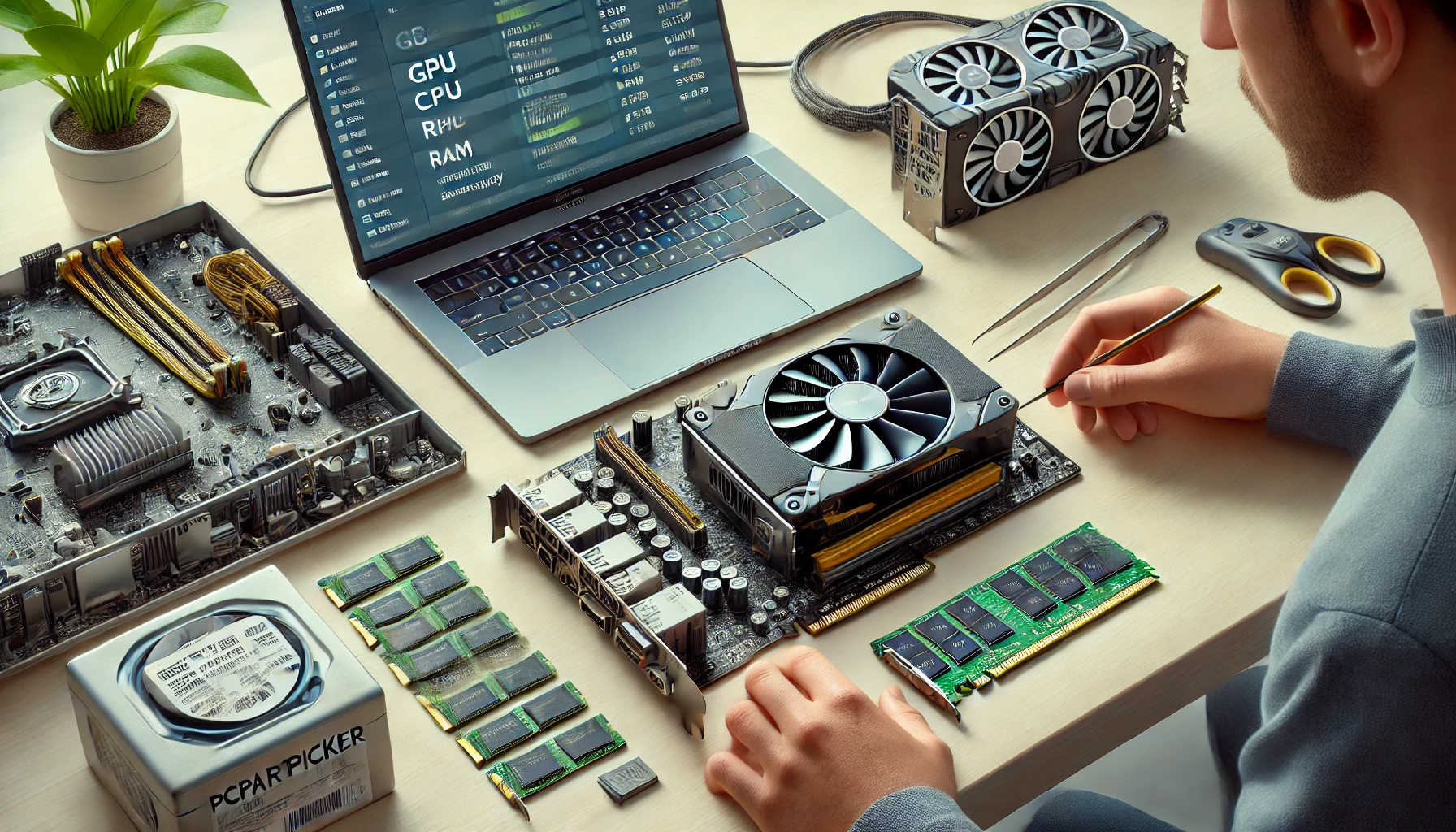Building a PC in 2025 doesn’t have to drain your wallet. With new hardware getting more expensive, many builders are turning to the used market to save money on parts like GPUs, CPUs, RAM, and cases. But is it safe? And what parts are actually worth buying used?
In this guide, you’ll learn when it makes sense to buy secondhand PC components, how to avoid common pitfalls, and what parts you should always buy new.
Why Consider Used PC Parts?
There are several good reasons to buy used components:
- Save money — often 30–70% cheaper than new
- Access older but still powerful hardware (e.g., GTX 1080 Ti, Ryzen 5000 series)
- Avoid inflated prices on hard-to-find new parts
- Upgrade older builds without replacing everything
Buying used is especially popular for budget gaming PCs, second systems, or home office machines.
Parts That Are Generally Safe to Buy Used
1. Cases
- No moving parts
- Easy to inspect for damage
- Can be cleaned and refurbished
- Great deals available on high-end models
💡 Just make sure it fits your desired motherboard size and GPU length.
2. Coolers (Air and AIO)
- Air coolers last many years if the fan is in good shape
- AIO liquid coolers are okay if under 3 years old and not leaking
💡 Replace thermal paste and clean thoroughly before reuse.
3. GPUs (with Caution)
- You can get incredible performance for cheap—especially with older RTX 20xx or RX 5000 cards
- Many gamers upgrade frequently, leaving behind powerful cards
🚫 Avoid:
- Cards used in mining farms (check for signs of heavy use)
- Cards with noisy fans or overheating issues
- Sellers who don’t allow testing or returns
💡 Buy locally or from trusted sellers with return options.
4. RAM
- RAM is solid-state and rarely fails
- Easy to test for stability (use MemTest86 or Windows Memory Diagnostic)
- Look for well-known brands like Corsair, G.Skill, Crucial, Kingston
💡 Make sure it’s the right type (DDR4 or DDR5) and supported by your motherboard.
5. Power Supplies (Only If Trusted)
- Only buy if the PSU is high-quality, less than 3 years old, and from a trusted brand (Corsair, Seasonic, EVGA)
- Check for 80+ certification
- Inspect cables for wear or fraying
🚫 Never buy low-end or generic PSUs used—risk of damage or fire.
💡 Ask for original receipt or warranty status if possible.
6. Motherboards (Case-by-Case)
- Inspect for bent pins (especially LGA sockets)
- Ask if BIOS was updated (especially for newer CPUs)
- Confirm no damage or corrosion near VRMs and ports
💡 Buy locally if possible so you can test before paying.
7. Storage (SSD/HDD)
- SSDs have limited write cycles but are usually safe if not heavily used
- Use tools like CrystalDiskInfo to check health and power-on hours
- HDDs are less reliable over time—be cautious
💡 Avoid old hard drives with more than 20,000 hours powered on.
Parts You Should Always Buy New
1. CPU (If No Warranty or Return Option)
- CPUs rarely fail, but bent pins or overheating can cause damage
- Many sellers overclocked or delidded their CPUs—risky without proper care
💡 Only buy used CPUs from reputable sources or with return options.
2. Power Supplies (Cheap or Unknown Brands)
- PSU failure can damage your entire PC
- Don’t trust secondhand no-name brands or PSUs over 5 years old
3. AIO Coolers Over 3 Years Old
- Pump failure can be silent but deadly (overheating)
- Leaks can damage your components
4. Fans and Thermal Paste
- Fans may wear out or become noisy over time
- Thermal paste dries out—always buy new
Where to Safely Buy Used PC Parts
- Local marketplaces (Facebook Marketplace, Craigslist, OLX)
- Trusted resellers (eBay with buyer protection, Amazon Renewed)
- Reddit hardware swap communities
- Friends or local tech groups
💡 Avoid sellers who refuse testing, use stock photos, or don’t answer questions clearly.
How to Test Used Parts
Always test used parts before finalizing a build:
| Part | Test Tool / Method |
|---|---|
| RAM | MemTest86, Windows Memory Diagnostic |
| GPU | Unigine Heaven, FurMark, 3DMark |
| CPU | Cinebench, Prime95 (watch temps) |
| SSD/HDD | CrystalDiskInfo, ATTO Benchmark |
| Motherboard | Check BIOS, USB ports, audio, PCIe slots |
Pros and Cons of Buying Used PC Parts
| Pros | Cons |
|---|---|
| Lower cost | Shorter lifespan |
| Access to older, rare hardware | No warranty or support |
| Better performance per dollar | Risk of hidden damage |
| Great for budget builds | Compatibility may be limited |
Final Thoughts
Buying used PC parts in 2025 is still a smart way to save money—as long as you’re careful. Stick to trusted sellers, inspect parts thoroughly, and know which components are safe to reuse. Combine used and new parts strategically for a powerful, cost-effective build.
Used parts aren’t just for budget builders—they’re a secret weapon for smart PC enthusiasts
